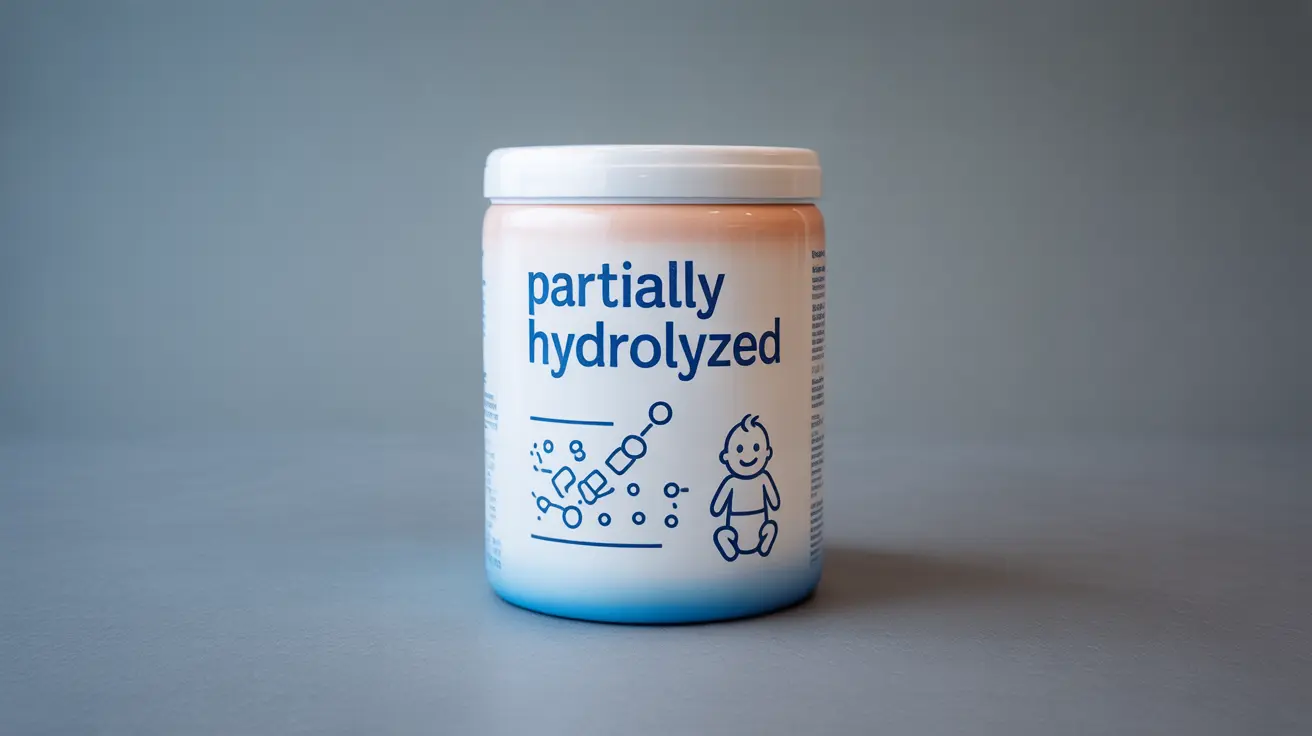When it comes to feeding your baby, choosing the right formula can feel overwhelming. Partially hydrolyzed formula has become increasingly popular as an option for infants who may have difficulty digesting standard cow's milk formula. This comprehensive guide will help you understand what partially hydrolyzed formula is and whether it might be right for your baby.
What Is Partially Hydrolyzed Formula?
Partially hydrolyzed formula contains cow's milk proteins that have been broken down (hydrolyzed) into smaller pieces. This process makes the proteins easier for babies to digest compared to standard infant formula. The partial breakdown of proteins can make this type of formula gentler on your baby's digestive system while still providing complete nutrition.
How Partially Hydrolyzed Formula Differs from Standard Formula
The main difference lies in the protein structure. In standard formula, the proteins remain intact, while in partially hydrolyzed formula, these proteins are broken down into smaller fragments. This modification can make the formula:
- More digestible for sensitive tummies
- Less likely to cause digestive discomfort
- Potentially easier to absorb
- Still nutritionally complete for healthy growth
Benefits of Partially Hydrolyzed Formula
Many parents choose partially hydrolyzed formula because it offers several potential advantages:
- Reduced likelihood of digestive issues
- May help prevent excessive crying and fussiness
- Could decrease the occurrence of gas and bloating
- Maintains proper nutrition levels
- May help with mild formula intolerance
When to Consider Switching to Partially Hydrolyzed Formula
Parents might consider switching to partially hydrolyzed formula if their baby shows signs of:
- Frequent fussiness during or after feeding
- Excessive gas
- Mild digestive discomfort
- Difficulty settling after meals
- Mild formula intolerance symptoms
Choosing and Preparing Partially Hydrolyzed Formula
When selecting a partially hydrolyzed formula, consider these important factors:
Selection Guidelines
- Look for brands that meet FDA standards
- Check for iron fortification
- Verify the age appropriateness
- Consider any additional supplements included
Preparation Safety
Proper preparation is crucial for your baby's safety and nutrition:
- Always wash hands thoroughly before preparation
- Use clean, sterilized bottles and nipples
- Follow the manufacturer's mixing instructions precisely
- Never dilute or concentrate the formula beyond recommendations
- Store prepared formula according to guidelines
Frequently Asked Questions
What is partially hydrolyzed formula and how does it differ from standard cow's milk formula? Partially hydrolyzed formula contains cow's milk proteins that have been broken down into smaller pieces, making them easier to digest than standard formula. While regular formula contains intact proteins, partially hydrolyzed formula features pre-broken protein chains that can be gentler on your baby's digestive system.
When should I consider switching my baby to a partially hydrolyzed formula? Consider switching if your baby shows signs of mild digestive issues with standard formula, such as excessive fussiness, gas, or mild intolerance symptoms. Always consult with your pediatrician before making the switch.
Can partially hydrolyzed formula help reduce fussiness, gas, or constipation in infants? Yes, partially hydrolyzed formula may help reduce these symptoms in some babies because the pre-broken proteins are easier to digest. However, results can vary among different infants, and not all babies will experience improvement.
Is partially hydrolyzed formula safe for babies without cow's milk protein allergy? Yes, partially hydrolyzed formula is safe for babies without milk allergies. It's designed for general use and can be particularly beneficial for babies with sensitive digestive systems, even without specific allergies.
How do I choose and prepare a partially hydrolyzed formula safely for my baby? Choose a formula that meets FDA standards and is appropriate for your baby's age. Always follow the manufacturer's preparation instructions exactly, use clean equipment, and maintain proper hygiene. Store prepared formula according to guidelines and never modify the concentration.




